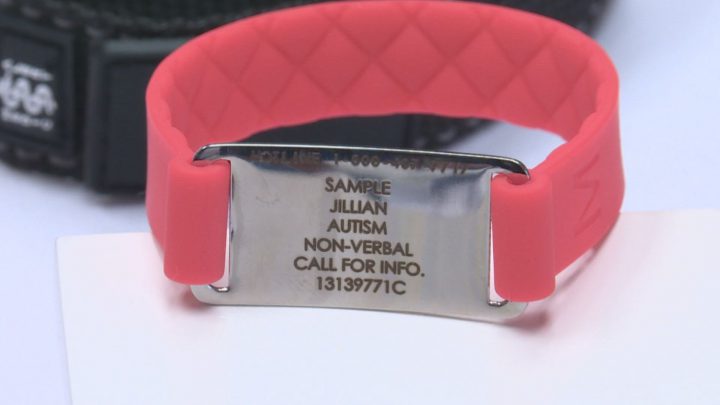It’s estimated one in every 68 children is diagnosed with autism, one of the most common neurological disorders affecting children.

Tristan Shout, 4, is one of them along with his six-year-old brother Ashton.
They are both non-verbal, must be supervised at all times, are drawn to water as well as heavy-duty construction equipment and neither recognizes danger.
“When you think of a young toddler wandering and how safe that is, it’s pretty much the same thing for my children.”
According to Amy Shout, her children have developmentally delays so they are more like an 18- to 24-month-old child.
She keeps the doors to their family home locked at all times, chimes sound when any door in the home is opened and a six-foot fence is all around their yard.
Despite all these measures, Trystan has climbed the downspout connected to the eavestrough to sit on top of the fence and watch the dog in the next yard.
He’s even disappeared within seconds from Amy’s sights on an outing to a Saskatoon mall, where she had him seat belted into a stroller and turned to quickly look at a pair of winter boots.
“He can’t tell you what his name is, he can’t tell you who his mom is, he can’t even point to tell you where he came from and likely wouldn’t be able to retrace his steps,” Shout said.
He was gone for five minutes and was finally spotted coming up from the parkade.

Get weekly health news
“I’m his mom, I’m fast and prepared for him to run … and I lost him.”
Bracelets to bring parents of children with autism some peace of mind
In the first week of March, Edmonton became the first city in Alberta to adopt a new program from MedicAlert.
Children with autism in Edmonton can now be fitted for the bracelet to assist with their safe return.
MedicAlert has been around for more than 55 years in Canada, focusing on alerting first responders to allergies and medical conditions.
So far, 10 cities in Canada have adopted the new expanded program, including five in Ontario, three in B.C., and one in Manitoba.
Project Lifesaver helps track those who wander off with transmitter device
- not living independently;
- diagnosed with dementia or Alzheimer’s disease;
- has a cognitive brain disorder;
- is on the autism spectrum;
- can’t have access to a car; and
- history of wandering.
Ultimately, the bracelets narrow down the time it takes to find someone and without a doubt could save the life of a child on the autism spectrum.
Sensory sensitivity challenges
Any bracelet is good in theory but officials said the challenge here is children with sensory sensitivities and the adjustment period to warm them to the idea of wearing one.
“My youngest, it took us three years to get him to wear winter boots so a bracelet it would probably take months of desensitization.”
Desirae Boutin, a behaviour analyst with Autism Services of Saskatoon, said they would start slowly with a kid and work their way up.
“Some of the kids might start at five seconds whereas another kid might be able to start at five minutes then we would go up slowly in time and reinforce keeping the bracelet on.”
According to Boutin, that could take up to a year for some children but at least the family wouldn’t have to live in fear.
Taylor also noted that even if the child were to take off their bracelet, at least teams would know the child’s last know whereabouts and personnel could fan out from there using standard search techniques.










Comments